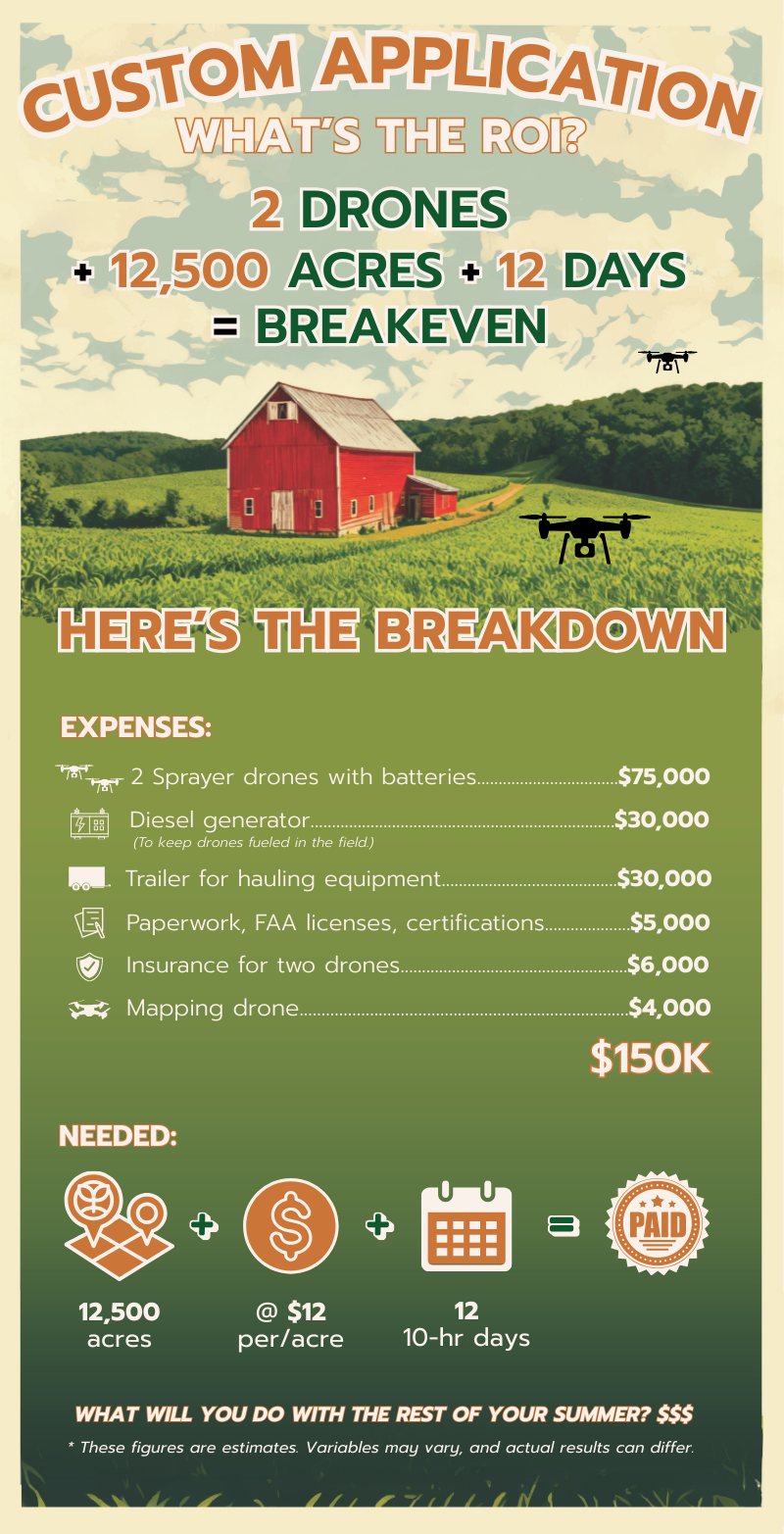Farming is all about working smarter and making every hour in the field count. That’s where spray/spreading drones come in. This isn’t a gadget you play with; it’s a precision tool that can deliver a payload in the field without touching the ground, reducing crop damage while providing exactly what crops need, when they need it. Beyond helping your own operation, drones open the door to becoming a custom applicator, offering precision services to other farmers and creating another revenue stream. Think of it as a new weapon in your operations arsenal that can start paying dividends in a single season.
Startup Costs & Gear
One drone is like sending a single tank into battle. It might get the job done, but it will take twice as long and leave you stretched thin without any backup. To cover acres efficiently and make real money, you need at least two drones working together. Here is what it takes to get both fully mission-ready:
- 2 Sprayer drone kits with batteries and chargers: $75,000
- Diesel generator to keep drones fueled in the field: $30,000
- Trailer for hauling equipment: ~$30,000
- Paperwork, FAA licenses, and certifications: ~$5,000
- Insurance for two drones: $6,000
- Mapping drone: $4,000
Total startup comes to around $150K. You will also need a pickup or vehicle to haul all the gear. Yes, it is an investment but you are buying efficiency, flexibility, and the potential for a quick return.
Disclaimer: These costs are estimates and may vary depending on equipment choice, location, and other factors.
Revenue Potential & Return on Investment
A typical rate to charge is $12 per acre. At that rate, you would need to cover roughly 12,500 acres to break even. Depreciate the drones over two years, and the annual breakeven drops to 6,250 acres.
Drone capacity is impressive. Each drone covers 50 acres per hour. Two drones working together cover 100 acres per hour. A full 10-hour day treats about 1,000 acres if field conditions are favorable. At that pace, your initial investment could be covered in just 12 full working days. Spread across a season, the numbers look even better with profit well within reach.
Auxiliary Mission or Personal Use
Using drones on your own fields saves time, reduces labor, and provides precise control over applications. The bigger opportunity comes when you offer spraying services to neighbors, current customers, or other ag retailers. Diversifying in this way could be the auxiliary mission your operation needs to strengthen the bottom line and create extra revenue.
Airstrike Ag Has Your Six
Starting a drone operation does not have to feel like dropping into enemy territory. Airstrike Ag is here to guide you, educate you, and help get your operation airborne. From equipment setup to operational tips, we make sure you are mission-ready from day one.
Mission Results
- Charging $12 per acre brings your breakeven to 12,500 acres total
- Two drones can cover that in less than two weeks of full-time work
- Depreciating equipment over two years reduces the annual breakeven to 6,250 acres
- With proper planning and support, drones can pay for themselves and start generating profit in a single season
Spray drones are more than just a tech upgrade. They are mission-ready tools that improve efficiency, precision, and profitability. With Airstrike Ag in your corner, you aren’t just buying drones; you are deploying a strategy to keep your farm running strong.
